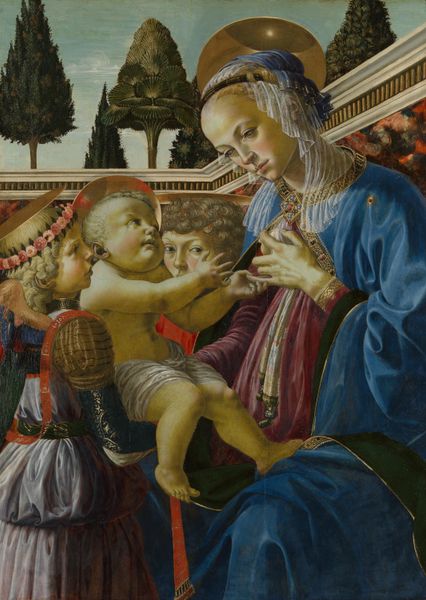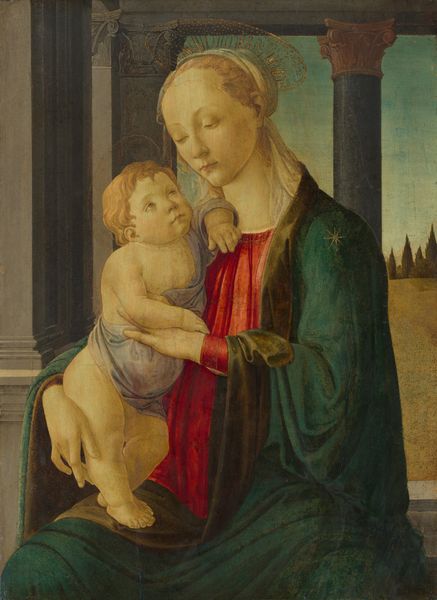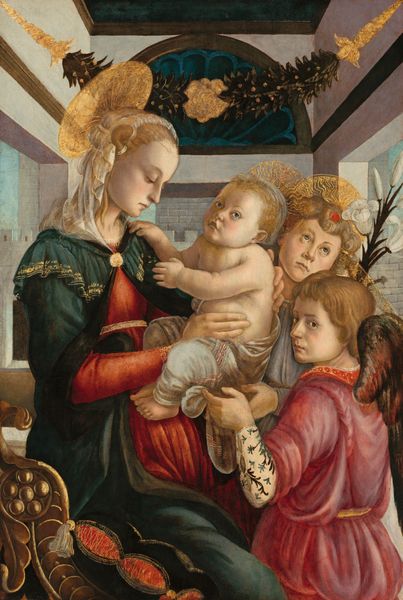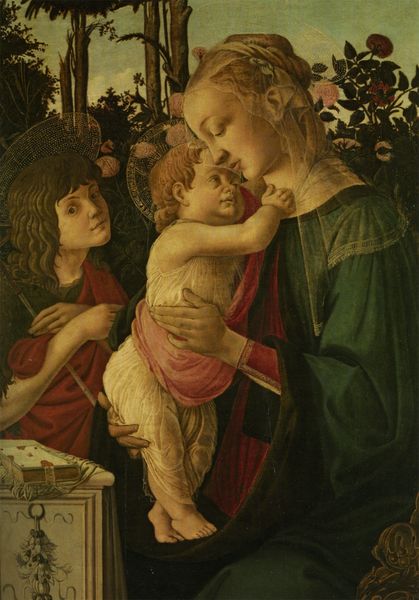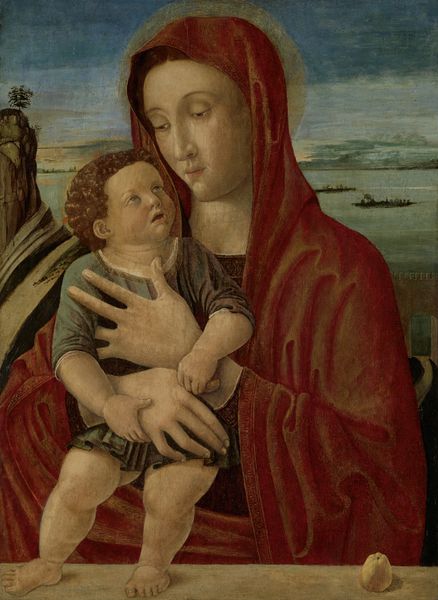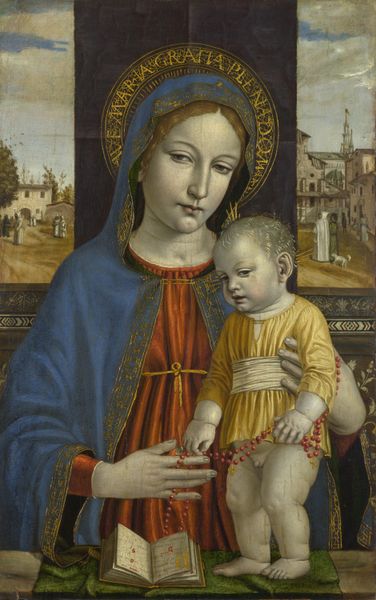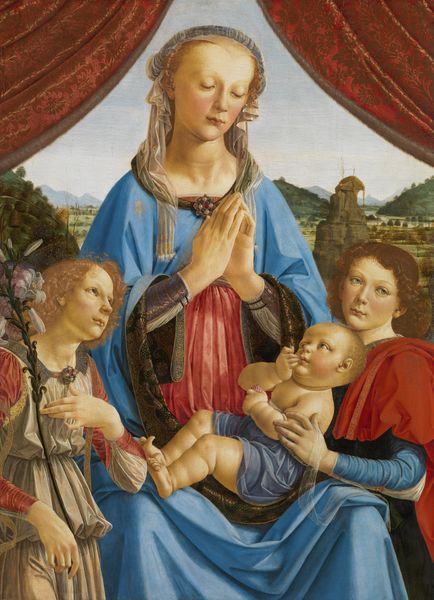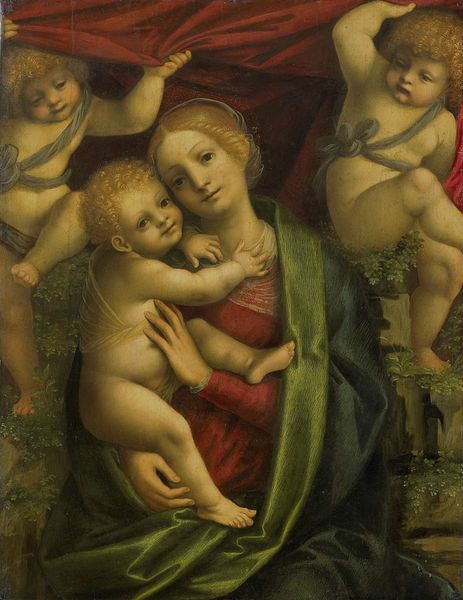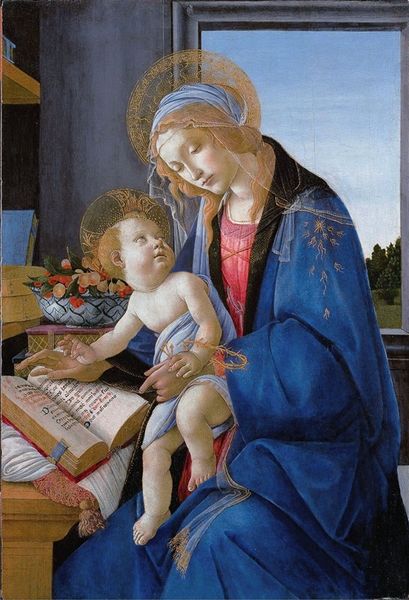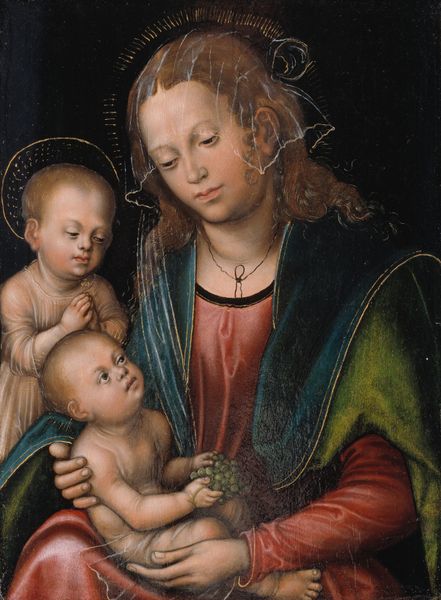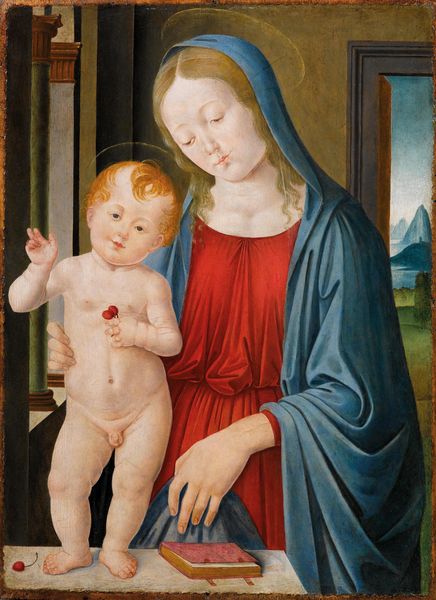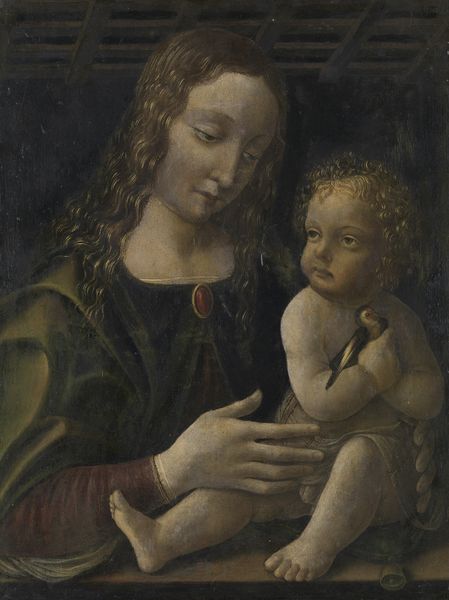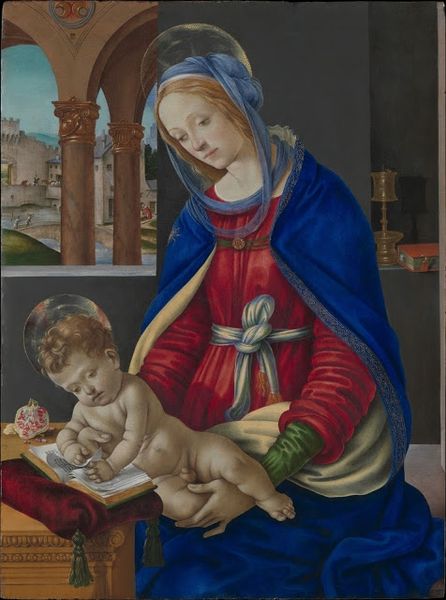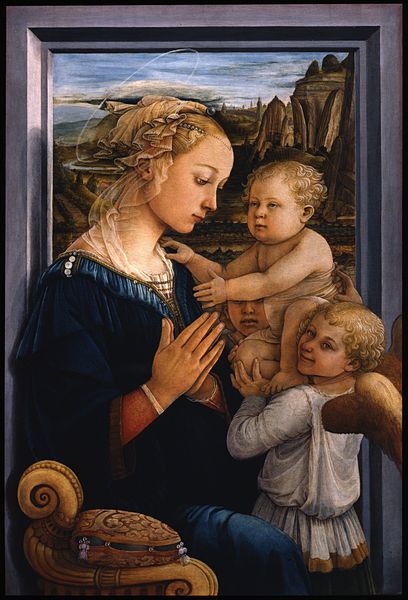
tempera, painting, oil-paint, sculpture
#
portrait
#
tempera
#
painting
#
oil-paint
#
figuration
#
oil painting
#
sculpture
#
painting painterly
#
italian-renaissance
#
early-renaissance
#
portrait art
Dimensions: 33 3/4 × 23 1/4 in. (85.8 × 59.1 cm)
Copyright: Public Domain
Curator: Botticelli's "Virgin and Child with an Angel," dating from about 1475-1485, welcomes us. Editor: My first impression is one of immense tenderness, yet also a kind of melancholy. It's in the Virgin's downturned gaze. And I notice how Botticelli worked with the tempera and oils on panel. There’s something particularly arresting about the layers of glazing, isn’t there? Curator: Absolutely. Consider that this tender pose is known as the "Madonna of Humility." She sits not on a throne, but directly on the ground, embodying a maternal humility but I sense it is the anticipation of the child's sacrifice that also lends her countenance that pensiveness. Note also the symbolic halo, almost hovering, around the Christ Child. Editor: It's interesting to consider how such a sacred subject becomes almost tactile. You can almost feel the weight of the fabric in the Virgin’s robes, imagine the texture. Were those colors, especially the blue of her robe, expensive pigments at the time? It always strikes me how tied these depictions of devotion were to actual materials and economics. Curator: Yes, lapis lazuli, the source of ultramarine blue, was highly prized. And observe how the composition subtly echoes the classical architecture in the background – a nod to both earthly and divine realms. This painting becomes a symbolic bridge, built from visual elements to connect us to the sacred story. Editor: Right, it really emphasizes the patronage and commissioning of art as part of social and religious life. Even the gold detailing woven through the angel’s robe speaks of economic realities. Curator: Yet, also notice the placement of the angel gazing at the infant Christ, in order to signify adoration and as a spiritual messenger and that, for me, deepens the complexity beyond material concerns. Editor: It is easy to lose sight of how much of it involved the labor of processing pigments, the application in glazes and layers—each part, labor. Seeing it that way brings new texture and humanity. Curator: Reflecting on "Virgin and Child with an Angel," I’m struck anew by its timeless evocation of maternal love and spiritual yearning and an embodiment of profound feeling. Editor: And I'm left contemplating the earthly creation of what we consider divine and to what extent such creative enterprise transcended time.
Comments
No comments
Be the first to comment and join the conversation on the ultimate creative platform.
